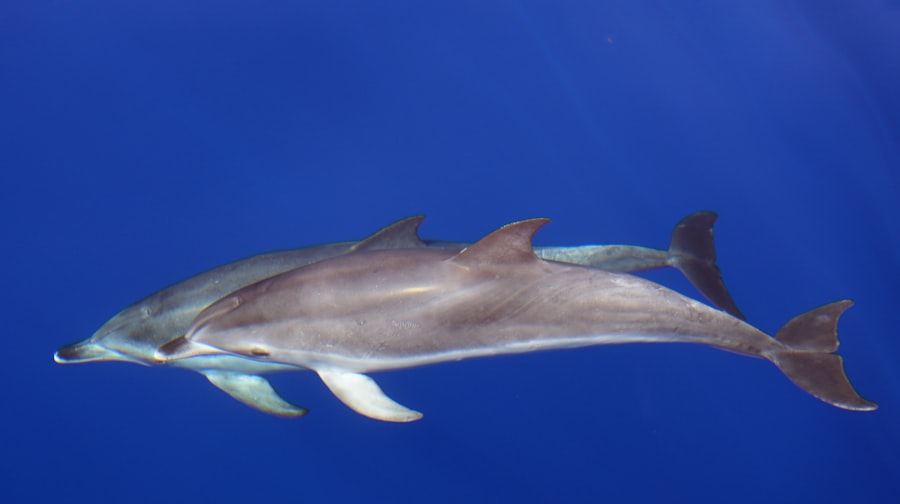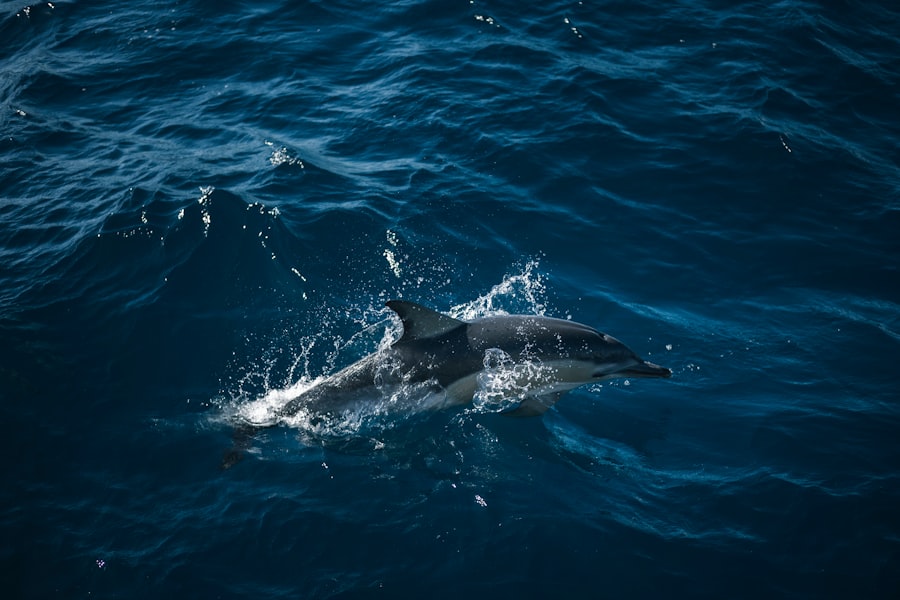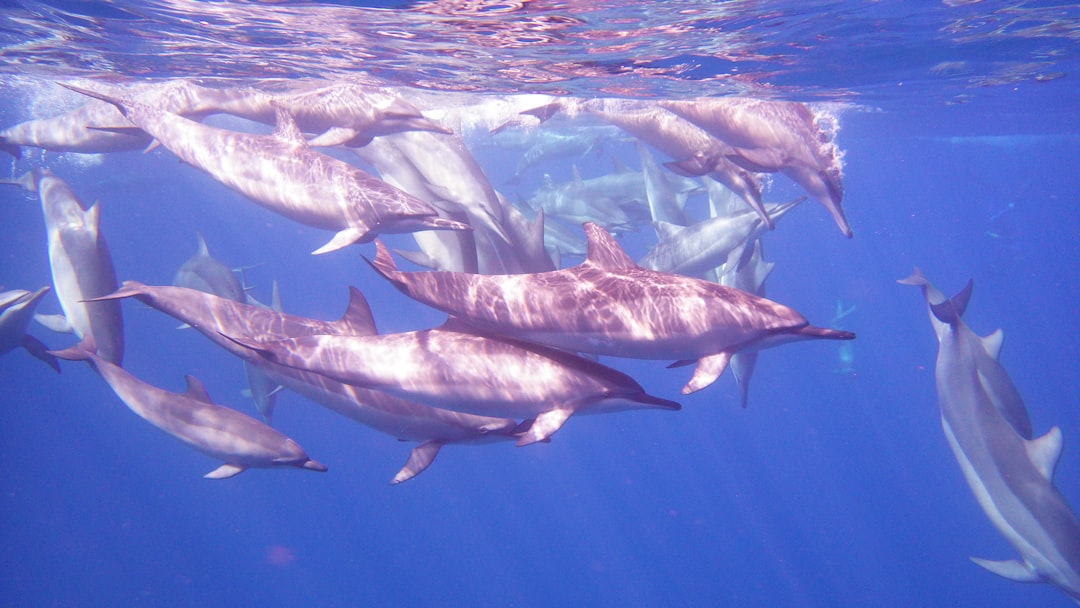In recent years, the World Trade Organization (WTO) has become a pivotal player in international trade disputes, particularly those that intersect with environmental concerns. One of the most notable cases to emerge from this arena involves the contentious issue of dolphin-safe tuna labeling. The WTO ruling on this matter has sparked widespread debate, raising questions about the balance between trade regulations and environmental protection.
As nations grapple with the implications of this ruling, it becomes essential to understand the background of the dolphin-safe tuna label, the controversies surrounding it, and the broader impact on both the tuna industry and dolphin conservation efforts. The WTO’s decision has not only legal ramifications but also ethical considerations that resonate with consumers and environmental advocates alike. The ruling has prompted stakeholders to reassess their positions on sustainable fishing practices and the efficacy of labeling systems designed to protect marine life.
As the tuna industry faces scrutiny, the future of dolphin-safe certification hangs in the balance, making it a critical moment for both trade policy and environmental stewardship.
Key Takeaways
- The WTO ruling addressed disputes over the Dolphin Safe Tuna label and its trade implications.
- Controversy exists around the label’s criteria and its impact on both dolphin conservation and tuna trade.
- The ruling may lead to changes in tuna labeling laws and certification standards globally.
- Environmental groups and tuna companies have shown mixed reactions to the WTO decision.
- The future of Dolphin Safe Tuna certification hinges on balancing industry interests with conservation goals.
Background on the Dolphin Safe Tuna Label
The dolphin-safe tuna label emerged in the late 20th century as a response to growing concerns about the impact of tuna fishing practices on dolphin populations. In particular, the use of purse seine nets, which encircle schools of fish, often resulted in the accidental capture and death of dolphins. Activists and environmental organizations rallied to raise awareness about these practices, leading to the establishment of labeling standards that would assure consumers that the tuna they purchased was caught without harming dolphins.
The label gained traction in the 1990s, with major retailers and brands adopting it as part of their commitment to sustainable fishing practices. The dolphin-safe label became synonymous with ethical consumption, appealing to environmentally conscious consumers who sought to make informed choices about their food sources. However, as the label’s popularity grew, so did the complexities surrounding its implementation and enforcement, setting the stage for future disputes.
The Controversy Surrounding Dolphin Safe Tuna

Despite its noble intentions, the dolphin-safe tuna label has not been without controversy. Critics argue that the criteria for what constitutes “dolphin-safe” are often ambiguous and can vary significantly between different certifying organizations. This inconsistency has led to confusion among consumers and raised questions about the integrity of the labeling process.
Some fishing companies have also claimed that they are unfairly penalized by stringent regulations that do not account for their efforts to adopt more sustainable practices. Moreover, there have been allegations that certain fishing methods labeled as dolphin-safe may still pose risks to marine life. For instance, while some methods may not directly harm dolphins, they could still have detrimental effects on other species within the ecosystem.
This complexity has fueled ongoing debates about whether labeling systems can genuinely reflect sustainable practices or if they merely serve as marketing tools for companies seeking to capitalize on consumer demand for eco-friendly products.
Overview of the WTO Ruling
| Aspect | Details |
|---|---|
| Case Name | United States — Certain Measures on Steel and Aluminum Products |
| Dispute Number | DS544 |
| Parties Involved | United States (Complainant), European Union, Canada, Mexico (Respondents) |
| Issue | Imposition of tariffs on steel and aluminum imports by the United States |
| WTO Panel Report Date | February 2020 |
| Key Findings | Tariffs inconsistent with WTO rules, specifically GATT Article I and Article XX |
| Ruling Outcome | United States required to remove tariffs or face authorized retaliation |
| Impact | Reaffirmed WTO rules on non-discrimination and exceptions for national security |
| Next Steps | Consultations and potential compliance measures by the United States |
The WTO ruling regarding dolphin-safe tuna labeling arose from a dispute between the United States and Mexico. Mexico challenged U.S. regulations that restricted the importation of tuna products based on their compliance with dolphin-safe standards.
The WTO ultimately sided with Mexico, asserting that U.S. labeling practices were discriminatory and violated international trade agreements. This ruling underscored the tension between trade regulations and environmental policies, highlighting how global trade frameworks can influence domestic conservation efforts.
The implications of this ruling are far-reaching, as it sets a precedent for how countries can regulate products based on environmental criteria without infringing on trade rights. The WTO’s decision has prompted nations to reevaluate their labeling laws and consider how they can align their environmental goals with international trade obligations. As countries navigate this complex landscape, the future of dolphin-safe tuna certification remains uncertain.
Implications for the Tuna Industry
The WTO ruling has significant implications for the tuna industry, particularly for companies that have built their brands around sustainable fishing practices. With the potential for increased competition from foreign producers who may not adhere to the same stringent standards, U.S. tuna companies face challenges in maintaining their market share.
The ruling could lead to a shift in consumer perceptions, as buyers may question the value of dolphin-safe labeling if it is no longer enforced uniformly across borders. Additionally, the ruling may prompt companies to reconsider their fishing practices and certification processes. In an effort to remain competitive, some businesses might seek alternative certifications or adopt new marketing strategies that emphasize sustainability without relying solely on dolphin-safe labels.
This shift could lead to a more diverse range of eco-labels in the market, but it also raises concerns about consumer confusion and the potential dilution of meaningful environmental standards.
Impact on Dolphin Conservation Efforts

The WTO ruling poses challenges for dolphin conservation efforts that have relied heavily on consumer awareness and labeling initiatives. With the potential weakening of dolphin-safe standards, there is concern that fishing practices could revert to less sustainable methods that endanger dolphin populations. Environmentalists fear that without robust regulations in place, progress made over the past few decades in protecting dolphins could be jeopardized.
If nations prioritize trade compliance over environmental protection, it could lead to a race to the bottom in terms of sustainability standards. This scenario underscores the need for a balanced approach that considers both economic interests and ecological responsibilities in order to ensure long-term conservation success.
Response from Environmental Groups
Environmental groups have expressed strong opposition to the WTO ruling, arguing that it undermines decades of progress in dolphin conservation. Many organizations have called for renewed advocacy efforts to raise awareness about the importance of sustainable fishing practices and the need for robust labeling systems that genuinely protect marine life. They emphasize that consumer demand for dolphin-safe products has played a crucial role in driving positive change within the tuna industry.
In response to the ruling, these groups are mobilizing campaigns aimed at educating consumers about the implications of weakened dolphin-safe standards. They are also advocating for stronger international agreements that prioritize environmental protection alongside trade considerations. By rallying public support and engaging with policymakers, environmental organizations hope to influence future regulations that safeguard both dolphins and sustainable fishing practices.
Reaction from Tuna Fishing Companies
Tuna fishing companies have had mixed reactions to the WTO ruling, reflecting a spectrum of interests within the industry. Some companies view the decision as an opportunity to expand their market reach without being constrained by stringent U.S. regulations. They argue that this could lead to increased competition and lower prices for consumers, ultimately benefiting both businesses and buyers. Conversely, other companies express concern about potential reputational damage associated with a perceived decline in sustainability standards. For those who have invested heavily in dolphin-safe practices, maintaining consumer trust is paramount. These companies may seek to differentiate themselves by emphasizing their commitment to ethical fishing methods even in a changing regulatory landscape. As they navigate these challenges, tuna fishing companies must balance economic interests with their responsibilities toward marine conservation.
Potential Changes to Tuna Labeling Laws
In light of the WTO ruling, there is a growing conversation about potential changes to tuna labeling laws both in the United States and internationally.
This may involve reevaluating existing labeling criteria or developing new frameworks that better align environmental goals with international trade obligations.
One possibility is the introduction of more comprehensive eco-labeling systems that encompass a broader range of sustainability metrics beyond just dolphin safety. Such systems could provide consumers with clearer information about fishing practices and their impacts on marine ecosystems. However, implementing these changes will require collaboration among stakeholders, including governments, industry representatives, and environmental organizations.
Future of Dolphin Safe Tuna Certification
The future of dolphin-safe tuna certification remains uncertain as stakeholders grapple with the implications of the WTO ruling. While some companies may choose to continue using dolphin-safe labels as a marketing tool, others might explore alternative certifications or abandon them altogether in favor of broader sustainability claims. This evolution could lead to a fragmented market where consumers struggle to discern which products genuinely adhere to ethical fishing practices.
As discussions around labeling laws continue, there is an opportunity for innovation in certification processes that prioritize transparency and accountability. Engaging consumers in conversations about sustainability can help drive demand for products that genuinely protect marine life while fostering a culture of responsible consumption. Ultimately, the future of dolphin-safe tuna certification will depend on how effectively stakeholders can navigate regulatory challenges while remaining committed to environmental stewardship.
Conclusion and Key Takeaways
The WTO ruling on dolphin-safe tuna labeling has far-reaching implications for both international trade and environmental conservation efforts. As stakeholders navigate this complex landscape, it is crucial to recognize the interconnectedness of trade policies and ecological responsibilities. The controversy surrounding dolphin-safe tuna highlights ongoing challenges in balancing economic interests with sustainable practices.
Key takeaways from this situation include the importance of clear and consistent labeling standards that genuinely reflect sustainable fishing practices. Additionally, collaboration among governments, industry players, and environmental organizations will be essential in shaping future regulations that protect marine life while complying with international trade agreements. As consumers become increasingly aware of these issues, their choices will play a pivotal role in driving positive change within the tuna industry and beyond.
The recent WTO ruling on dolphin-safe tuna has sparked significant discussions regarding international trade and environmental protection. For a deeper understanding of the implications of such rulings, you can read more about related topics in this article on the importance of sustainable fishing practices and their impact on marine life. Check it out here: Hey Did You Know This.
WATCH THIS! The $10 Billion Lie: Why Your “Dolphin-Safe” Tuna Isn’t Safe
FAQs
What is the WTO ruling on dolphin safe tuna?
The World Trade Organization (WTO) ruling on dolphin safe tuna addresses trade disputes related to labeling and import restrictions on tuna products that claim to be “dolphin safe.” The ruling evaluates whether such measures comply with international trade rules.
Why was the WTO involved in the dolphin safe tuna issue?
The WTO became involved because some countries challenged the dolphin safe labeling requirements and import restrictions imposed by others, arguing that these measures were unfair trade barriers violating WTO agreements.
What does “dolphin safe” mean in the context of tuna fishing?
“Dolphin safe” refers to tuna fishing practices that avoid harming dolphins, particularly by not using fishing methods like purse seine nets that encircle and can accidentally catch dolphins.
Which countries were involved in the WTO dispute over dolphin safe tuna?
The primary countries involved were the United States, which implemented dolphin safe labeling requirements, and countries like Mexico and others that challenged these measures at the WTO.
What was the outcome of the WTO ruling on dolphin safe tuna?
The WTO ruled that certain U.S. dolphin safe labeling requirements were inconsistent with WTO rules because they discriminated against tuna products from other countries, requiring the U.S. to amend its measures to comply with trade obligations.
How does the WTO ruling affect consumers?
The ruling impacts how tuna products are labeled and marketed internationally, potentially influencing consumer information about dolphin safety and the availability of tuna products from different countries.
Are dolphin safe labels regulated internationally?
There is no single international standard for dolphin safe labels; regulations vary by country. The WTO ruling encourages countries to align their measures with international trade rules while addressing dolphin protection.
What fishing methods are considered dolphin safe?
Fishing methods considered dolphin safe typically exclude practices like setting nets around dolphins. Alternatives include pole-and-line fishing or using nets that do not encircle dolphins.
Has the WTO ruling led to changes in dolphin safe labeling policies?
Yes, following the WTO ruling, countries like the U.S. have revised their dolphin safe labeling requirements to ensure compliance with WTO rules and to avoid discrimination against foreign tuna products.
Why is dolphin safe tuna important for environmental conservation?
Dolphin safe tuna practices help protect dolphin populations from accidental capture and injury during tuna fishing, contributing to marine biodiversity conservation and sustainable fishing practices.
